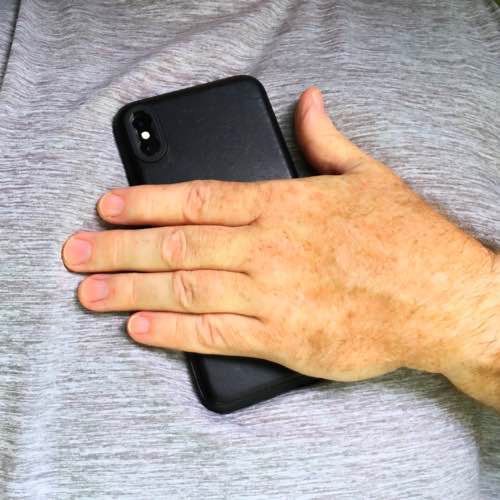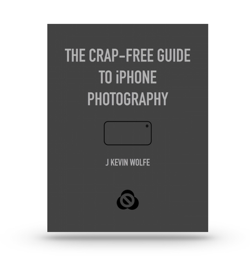The Minimalist iPhone Shoot Kit: Your phone, your brain.

This article shows you the simple tricks to get the most out of shooting with just your iPhone, no accessories required.
Many famous photographers (Henri Cartier Bresson and Steve McCurry among them) shot with a 35mm camera body and a 50mm prime lens most of their careers. These masters knew their camera and lens well enough to take spectacular, out-of-the-ordinary photos with the most ordinary lens. They had no kit to slow them down: just a camera with one lens and a pocketful of film.
Lose some weight.
Those who shoot with a DSLR often drag along lenses, filters, tripod brackets, lights, remote shutters, etc. The new iPhone 13 Pro has really eliminated the need for any of these toys with lenses that run from, marco to wide to tele, lighting choices in Portrait mode and incredible stability in Night mode. We really don’t need more toys to weigh us down when the cameras in the iPhone are so capable.
Free your mind, dude.
Before iPhone 13 Pro, I used to carry a waist pack full of iPhone gear but innovations in the cameras have made that unnecessary. When you weigh yourself down with gear, you also weigh down your mind with decisions on what toys to use and when. The extra thought can slow down the creative process. Many of the world’s best street shooters just use a wide-angle lens so they can work fast. Since every iPhone available today has a Wide camera, you’ve got that base covered too. If you have more camera on your iPhone, so much the better.
There are many techniques that professional photographers have improvised over the years to work at slower and faster shutter speeds, improve on lighting and emphasize perspective without carrying around anything but the camera. These techniques just require your brain. A lot of know-how has no physical weight.
Make use of your built-in lenses.
The iPhone 13 Pro and has a triple camera system that includes a Wide, Tele and now an Ultra Wide camera with macro. If you work heavily with all three cameras, you’ll learn the strengths and weaknesses. The lens lengths weren’t chosen at random: They’re the most useful perspectives in photography. The iPhone’s Tele camera is great for capturing flattering photos people, while the Wide is practical for capturing their environment, with or without them in it. The Ultra Wide camera gives a view similar to a GoPro, letting you to leave the action cam at home. And macro capability lets you picture the world from extremely close up.
When using Portrait mode on the iPhone Pro models, images from the Wide and Tele cameras or Wide and Ultra Wide are combined to create a sharp subject against a blurred background. (Some iPhone models with a single lens can do this too, but the trick isn’t as nice.)
The Wide camera has become the standard phone lens view and probably 80-90% of photos use this lens. It’s really useful for most shooting scenarios with the ability to get in close to the subject and work in low light. It’s also the best quality of the three cameras. With any iPhone, you can focus on an object as close as four inches with the Wide camera and zoom in to about 1.6 or 1.7 by pinching out on the screen. This effectively puts you closer, but there will be no noticeable loss in image quality.
The Ultra Wide camera captures a massive amount of the world. Take care though: It exaggerates perspective at the edges, so you’ll want to keep people near the center.
Bracing without a tripod.
When shooting a long exposure or in low light, you’ll likely want to hold your camera as still as possible to avoid camera shake. Pro photographers commonly adopt sniper techniques for steadiness:
- Brace your camera, body or elbows against the ground, a wall, a fence post, whatever is handy.
- If you can’t brace, dig your elbows into your side to help stabilize.
- Exhale slowly and squeeze the shutter to minimize movement or set the timer.
Shoot slower or faster to capture what the eye doesn’t see.
Your iPhone is designed to shoot with a shutter speed fast enough to avoid camera shake and to freeze most subjects. But sometimes you want to artistically capture the blur of subject or camera movement or shoot with a faster shutter speed to freeze motion.
Freezing motion.
To freeze, use the Burst mode to take multiple shots. The phone assumes you’re trying to freeze action and shoots at a slightly faster shutter speed. On older iPhones, you hold the shutter button for burst mode. On the current models, hold the shutter button and drag it down in landscape mode or drag it left in portrait mode.
There are many apps like Moment, Halide, Manual and Obscura that allow more precise control of shutter speed. 1/1000 will freeze motion, like kids and pets.
Blurring motion.
To intentionally blur your images, shoot in Live mode > Drag up on the photo > Choose Long Exposure. This combines multiple images into a three-second exposure. (Note that the exposure actually starts 1.5 seconds before you press the shutter in Live mode.)
If you want more control over creative blur, try Bluristic, Moment or AvgCamPro These all can mimic a slow shutter by combining images. Bluristic does an great job of focusing on a point in the image and blurring everything else. Moment combines multiple images to give the effect of blur. AvgCamPro allows you to set the precisely control a series of images that get combined into one. You’ll find this article on creatively blurring your images useful.
Lighting.
You get the kindest natural light when you shoot your subject out of direct sunlight or on an overcast day. Here are a few more tips for more flattering lighting:
- Turn on Smart HDR in Settings > Camera. This does a surprisingly good job of minimizing the difference in light and shadow to balance the exposure.
- Use Portrait Mode. In addition to blurring the background for a nice bokeh, portrait mode can also does some skin smoothing, lessens contrast and warms the tone. It’s not just for people, but any subject within 2-8 feet. You can adjust the effect to add studio or contour lighting to your image.
- Use fill flash. Flash icon > On. Fill flash has it’s pluses and minuses, but it’s often the thing to use in really dim light or when the subject has the light coming from behind them. Fill Flash works in Portrait Mode too.
- Move the subject out of the direct sun. Direct sunlight is the least flattering light. Not only is it harsh looking, it causes people to squint, make awkward faces and can make them tense up.
- Block the sun with your body. This is a useful technique for softer light on flowers.
Tip: When your human subject is in open shade, their face is likely to pick up a blue cast from the sky. If so, warm the cast a bit. In the Photos app: Edit > Adjust > Color > Cast > Drag left.
As you can see you can get along pretty well without the attachable toys.
My take.
I have a maximalist shoot kit for my iPhone that consists of four lenses, a mounting bracket, a monopod or tripod, lights etc. While it only weighs a few pounds and extends the capabilities of my iPhone into DSLR territory, it usually sits at home now. These toys came in really handy in iPhone’s earlier days when it had one back lens, more primitive stabilization and couldn’t shoot RAW. But as iPhone photography capabilities have improved, there’s less and less need to be bogged down by extras.
Since my Minimalist Shoot Kit consists of just my wits, I usually always have it with me and rely on what it can do more and more. If you do need a Maximalist Shoot Kit, I also have an article on the great photo toys available for your iPhone.

Get the definitive book for mastering your iPhone camera: The Crap-Free Guide to iPhone Photography
